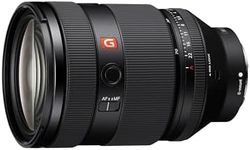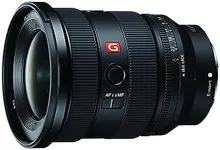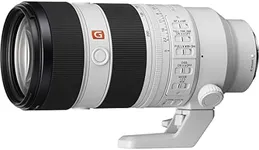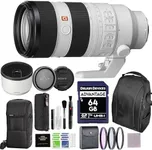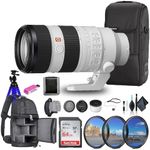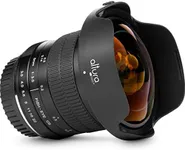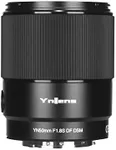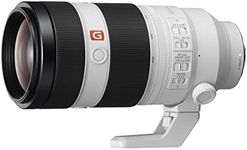Buying Guide for the Best Sony Zoom Lenses
Choosing the right zoom lens for your Sony camera can significantly enhance your photography experience. A zoom lens allows you to cover a range of focal lengths, making it versatile for various types of photography, from landscapes to portraits to wildlife. When selecting a zoom lens, it's important to consider several key specifications to ensure it meets your needs and helps you achieve the best possible results.Focal Length RangeThe focal length range of a zoom lens determines how much you can zoom in or out. It is usually represented in millimeters (mm), such as 24-70mm or 70-200mm. A wider range (e.g., 18-200mm) offers more versatility, allowing you to capture wide-angle shots and zoom in on distant subjects. For general use, a mid-range zoom like 24-70mm is ideal. For sports or wildlife photography, a longer range like 70-200mm or more is better. Consider what types of subjects you will be photographing most often to choose the right focal length range for you.
ApertureThe aperture of a lens, indicated by an f-number (e.g., f/2.8, f/4), controls the amount of light entering the lens and affects depth of field. A lower f-number (e.g., f/2.8) means a larger aperture, which allows more light and is better for low-light conditions and achieving a blurred background effect. A higher f-number (e.g., f/4 or f/5.6) means a smaller aperture, which is suitable for well-lit conditions and greater depth of field. If you often shoot in low light or want more control over depth of field, choose a lens with a lower f-number.
Image StabilizationImage stabilization (IS) helps reduce blur caused by camera shake, especially at longer focal lengths or slower shutter speeds. This feature is particularly useful for handheld shooting and in low-light conditions. Some lenses have built-in stabilization, while others rely on the camera's stabilization system. If you frequently shoot in situations where camera shake is a concern, look for a lens with image stabilization to ensure sharper images.
Autofocus Speed and AccuracyAutofocus (AF) speed and accuracy are crucial for capturing sharp images, especially of moving subjects. Lenses with fast and accurate AF systems are better for action photography, such as sports or wildlife. Some lenses feature advanced AF motors like Linear or Direct Drive SSM, which provide quicker and quieter focusing. If you often shoot fast-moving subjects, prioritize lenses with superior AF performance.
Build Quality and Weather SealingThe build quality of a lens affects its durability and performance in various conditions. Lenses with metal bodies and weather sealing are more robust and can withstand harsh environments, such as rain or dust. If you plan to shoot outdoors frequently or in challenging conditions, choose a lens with good build quality and weather sealing to ensure it lasts longer and performs reliably.
Weight and SizeThe weight and size of a lens can impact your comfort and ease of use, especially during long shooting sessions or travel. Larger and heavier lenses may offer better performance but can be cumbersome to carry around. Conversely, smaller and lighter lenses are more portable but may have some compromises in features. Consider how much weight you are comfortable carrying and how often you will be traveling with your gear to choose a lens that balances performance and portability.
CompatibilityEnsure that the zoom lens you choose is compatible with your Sony camera. Sony has different mounts, such as E-mount for mirrorless cameras and A-mount for DSLRs. Verify that the lens mount matches your camera body to ensure proper fit and functionality. Additionally, some lenses are designed specifically for full-frame or APS-C sensors, so make sure the lens is suitable for your camera's sensor size.

